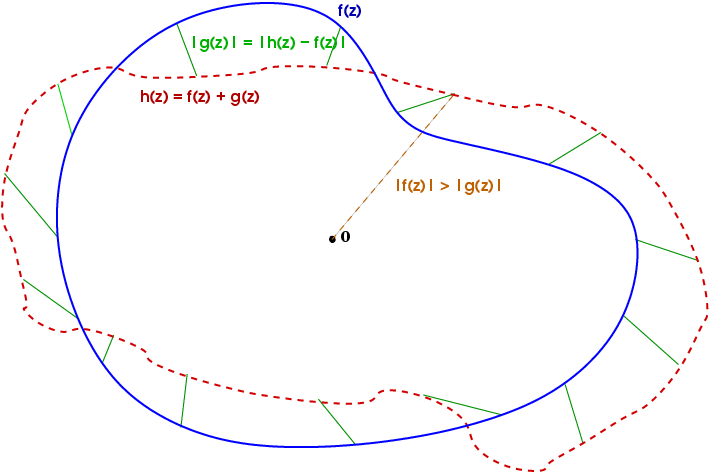Translated with the help of ChatGPT and Google Translator
Yesterday, while watching YouTube, I found the following very interesting video. It was a video explaining how to find the number of roots within a certain region of a complex function using Rouché's Theorem.
#Definition

To briefly explain Rouché's Theorem explained in this video, it is as follows.
"If always holds true on the boundary of a region , then and is the same."
And when always holds, is said to be dominant over .
Using this, when trying to find the number of roots of a complex polynomial function within a certain region , is dominant, and the simple term and the non-dominant term $ We can easily solve the problem by dividing by g$.
#Example
Let's follow the example from the video above. We want to find the number of roots of the function where .
To do so, set the area , then subtract the number of roots in and from the number of roots in . .
First, regarding the number of roots inside each region, in , , so , so holds true.
Therefore, can be divided by .
Therefore, the number of roots of inside is 2, the same as the number of roots of . (middle root at )
At this time, you should be careful that only the number of roots is the same, but the values of the roots are not the same. Therefore (in general) has no roots at .
Similarly, Above, , so $f(z)=z^5, g( You can divide by z)=3z^2+1$.
Therefore, the number of roots of inside is 5, the same as the number of roots of .
Finally, above , we just need to show that has no roots.
This also seemed to be a very simple method in the video above, as shown below.
If a root such as exists, then
must be established. Obviously, this is false, so there is no such thing as such that .
In fact, this cannot but be established since is dominant over on . If a root exists on the boundary, , so will hold, and therefore , which means is not dominant.
Therefore, the number of roots inside - the number of roots on - the number of roots inside = .